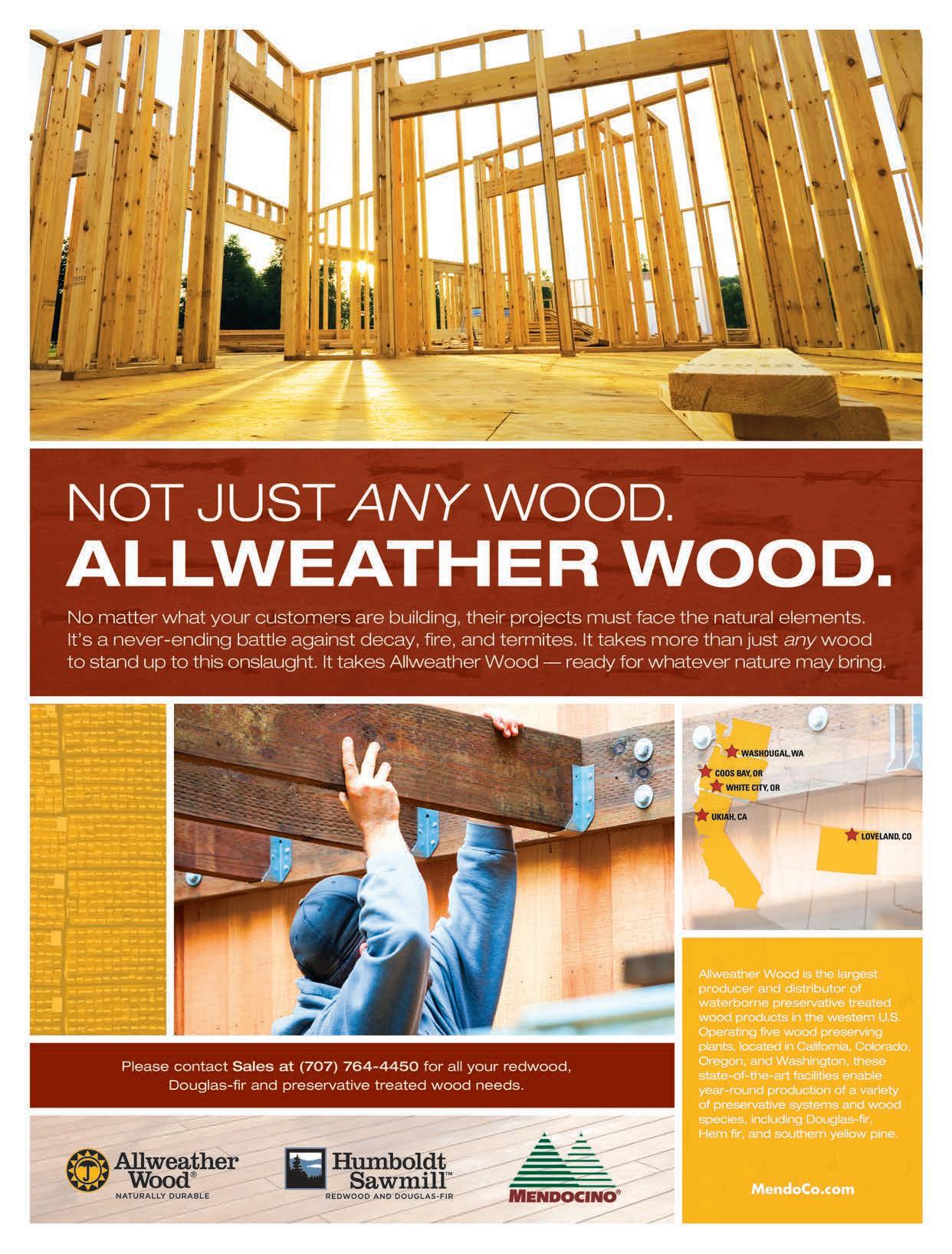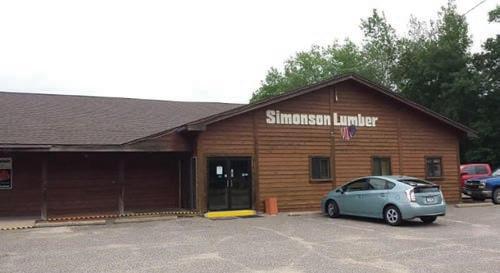
2 minute read
FIRE-RETARDANT-TREATED WOOD
FIRE-RETARDANT treatment reduces ame spread, while maintaining the integrity of the structure. (FlamePRO photo courtesy of Northeast Treaters)
Interest in re retardant treated wood heats up
THE RECORD WILDFIRES of 2020 have sparked signi cant interest in reretardant-treated wood products.
Visits to the FireResistantWood.org website nearly doubled last year, as people turned to the web to nd out more about re retardants. The website is maintained by Western Wood Preservers Institute (WWPI), which represents treaters in the West who produced re-retardant-treated wood.
The increased interest in the products also underscored some common misperceptions about re-retardant-treated wood. One common question: “Can preservative-treated wood also be re-retardant treated?” While there are re retardants rated for exterior use, it is not possible to treat wood with both preservatives and re retardants.
Traditionally, most re-retardant-treated lumber and plywood is treated for interior use, where building codes de ne where this wood can be used as an alternative to non-combustible materials. Building codes also are very speci c on what quali es as re-retardant-treated wood.
The International Building Code, Section 2303.2, de nes re-retardant-treated wood as “wood products impregnated with chemicals by a pressure process.” If not applied through

Borates CA-C
Above + Ground Contact Rough TiMbeRs uTiliTy Poles PRessuRe TReaTed luMbeR FiRe ReTaRdanT TReaTed luMbeR and PlyWood

Call the experts: • Robert Moore • Jim Winward UTAH WOOD PRESERVING CO.
1959 SOUTH 1100 WEST WOODS CROSS, UTAH PHONE - WOODS CROSS: (801) 295-9449 FAX (801) 295-9440 PHONE - SALT LAKE (801) 262-6428 FAX (801) 748-0037
pressure, the treatment “shall be an integral part of the manufacturing process of the wood product.” The 2018 edition of the IBC further clari es what is allowed: “The use of paints, coatings, stains or other surface treatments are not an approved method of protection as required in this section.”
Still, the wild res have spawned promotion of a variety of spray-on coatings claiming to work just as well as re-retardant-treated wood. The e ectiveness of these products remain unproven, yet are promoted for application on existing wood for protection. By comparison, re-retardant-treated wood has been used for decades, creating an extensive history of performance in a variety of structures.
Another common misperception is that re-retardant treating makes the wood reproof. The reality is that re retardants are intended to slow the spread of re so that occupants of the structure can safely exit and rst responders have more time to try to save the structure.
The intensity of today’s wild res takes a toll on every material. Fueled by high winds, the fast-moving wild res can melt automobiles and crack pavement and concrete. Wood, even when treated with re retardants, has little chance to withstand such infernos.
The complexities of the wild re issue defy simple solutions. Protecting structures from the ravages of wild re will take a multi-faceted approach, which will likely include re-retardant-treated wood.











